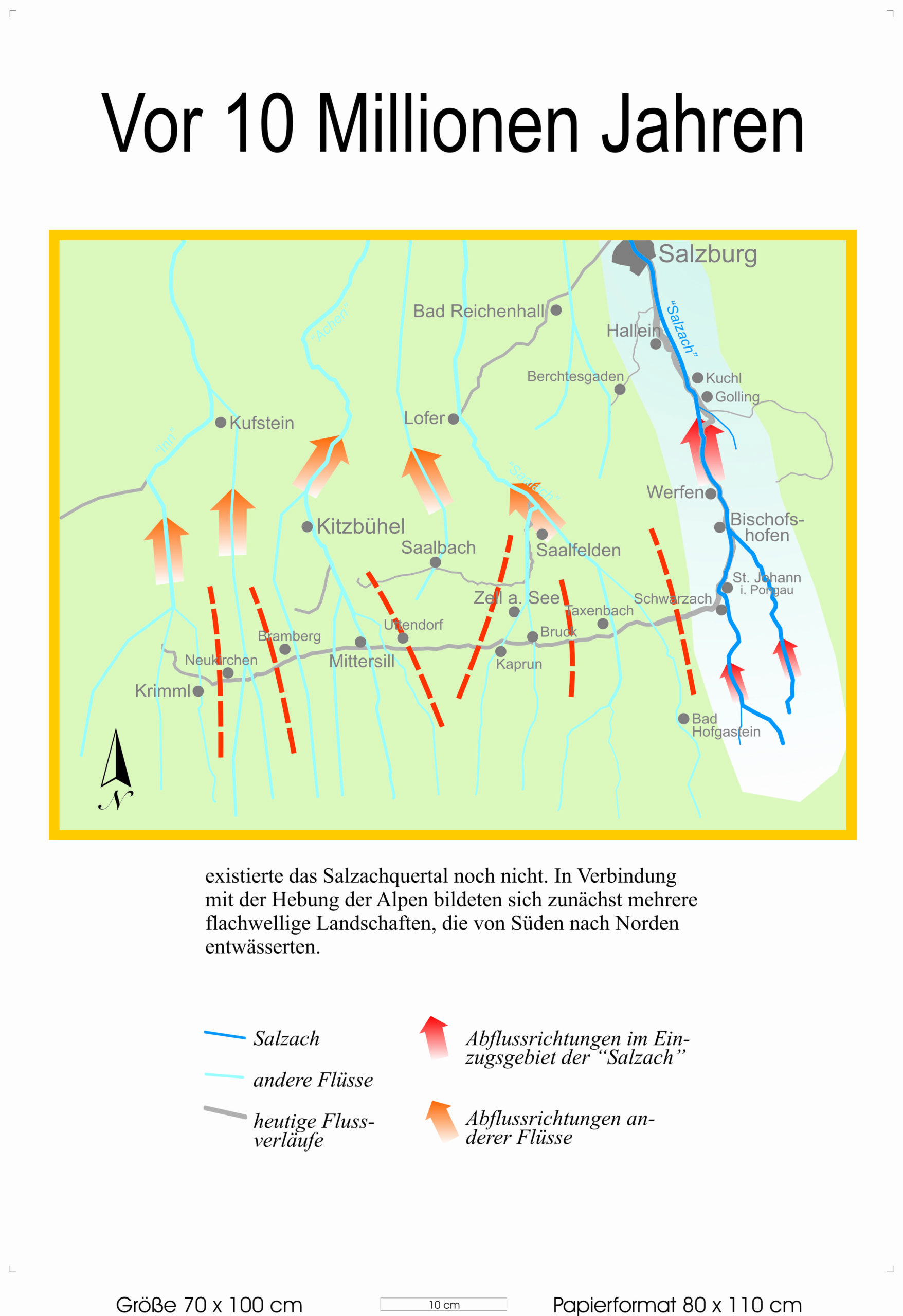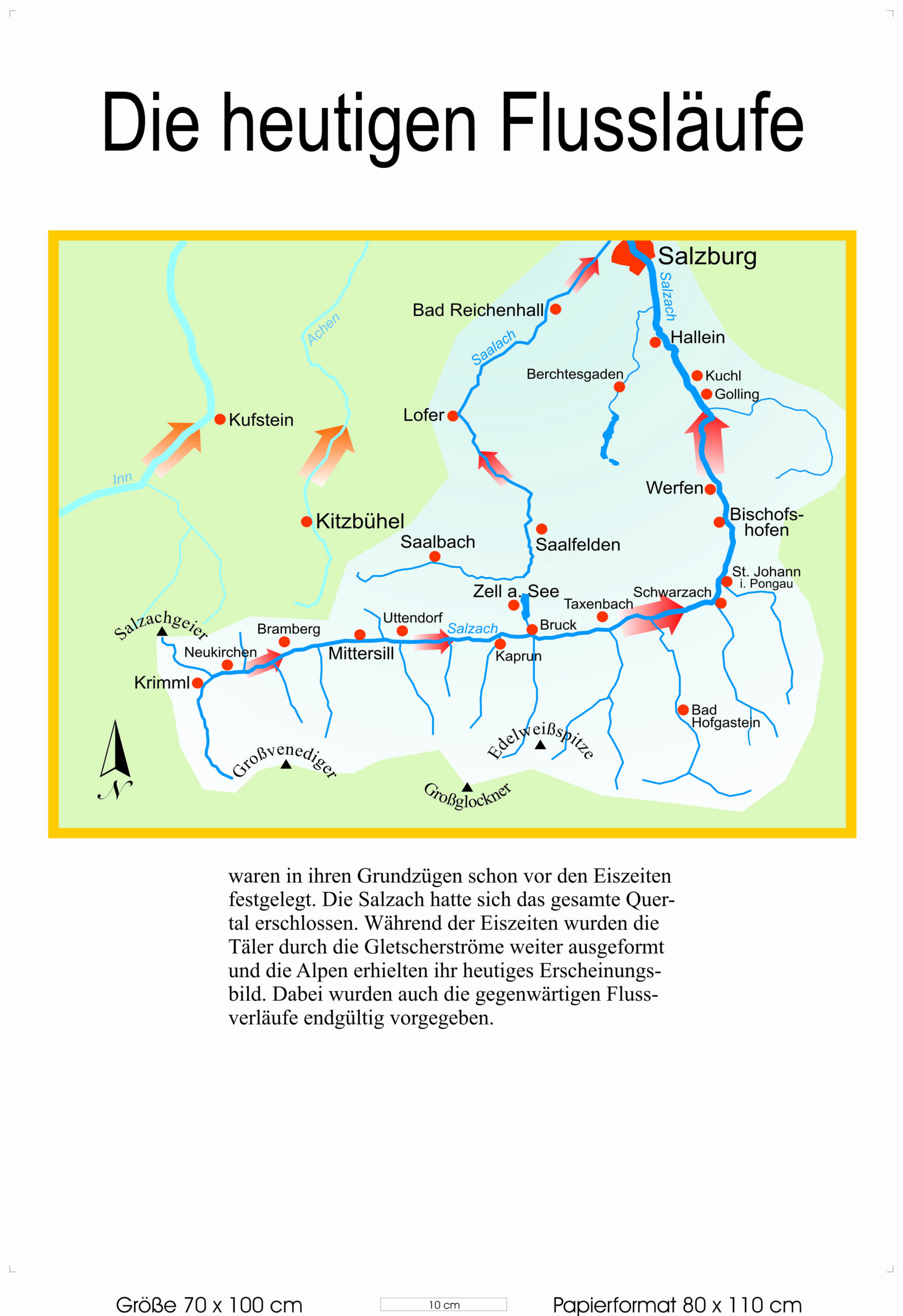Primal-Salzach - St. Veit Terrace
The drainage system in the province
of Salzburg has not looked like it does
today since primeval times. About 10
million years ago, the Salzach valley
from Krimml to St. Johann did not yet
exist. All rivers coming from the south
(today’s main ridge of the Alps) flowed
directly through a gentle hilly landscape
(today’s Steinernes Meer, Hochkönig,
Hagengebirge, Tennengebirge) to the
north. On some limestone plateaus you
can still find so-called eye stones: these
are river pebbles that were deposited at
that time. Only about 6 million years ago,
the Salzach valley began to continuously
carve inwards.
About 3 million years ago, drainage of
the Primal-Salzach stretched back as far
as Mittersill. The upper Salzach valley
still drained through Kitzbühel. At that
time, the valley floor of the Salzach was
not that deep and it flowed along today’s
“Sonnenterrasse” (sun terrace) between
Goldegg and St. Veit. This stretch of land
is therefore a fossil (old) river bottom of
the Salzach! During the Ice Age, the valleys
were cleared out by powerful ice flows and
today’s drainage system was created.
Kids
Fossils in the Alps
Fossils in the Alps are like ancient "treasure chests" from the past! Many millions of years ago, the Alps were very different from today. Back then there was a large sea with many animals and plants. When an animal died, it could sink to the bottom of the sea and be covered by sand and mud. Over many years, these layers became thicker and thicker, compressing the animal or plant further and further. This pressure and time fossilised the remains in the ground. These remains of plants and animals are called fossils.
When geologists break open the stones, they can discover these ancient treasures and find out what life was like in the past and what creatures lived on the earth.
Fossils in the Alps
Fossils in the Alps are like time capsules from the past! Many millions of years ago, the Alps looked very different from today. Instead of the high mountains, there was a huge sea in which many different animals and plants lived. When an animal died, it often sank to the bottom of the sea and was gradually covered by sand and mud. Over time, the layers became thicker and thicker, compressing the remains of the animal or plant. This great pressure and the passage of time eventually turned the remains into stone. These fossilised remains are called fossils.
Geologists who study rocks and fossils can find these ancient remains when they break open rocks. This is how they discover fossils and learn more about what life looked like millions of years ago and which animals and plants inhabited the earth back then.
Fossils in the Alps
Fossils in the Alps are like windows into the distant past. Many millions of years ago, the region looked very different - instead of today's mountains, there was a large sea inhabited by various animals and plants. When an animal died, it could sink to the seabed, where it was covered by layers of sand and mud. Over time, these layers piled up and the pressure increased. Over many millions of years, this enormous pressure transformed the remains of the animal or plant into fossils by slowly fossilising them. During the fossilisation process, the bones gradually dissolve and are replaced by minerals. In addition to body fossils, there are also trace fossils. These can be animal footprints or worm burrows.
Geologists who study rocks and the history of the earth break open layers of rock to find these fossilised remains. Fossils give us valuable insights into life millions of years ago and show us what creatures existed back then and how the earth has changed since then.




